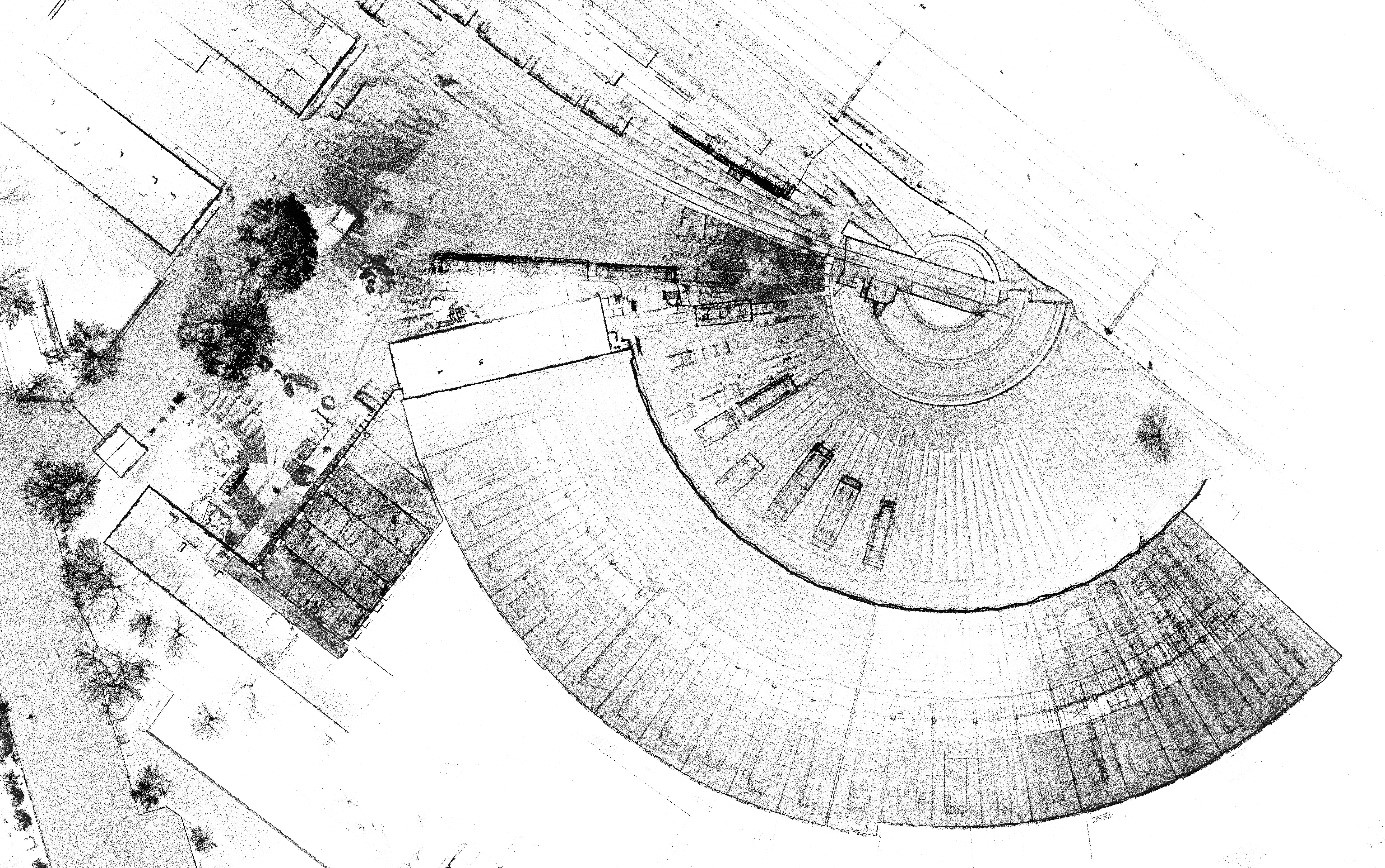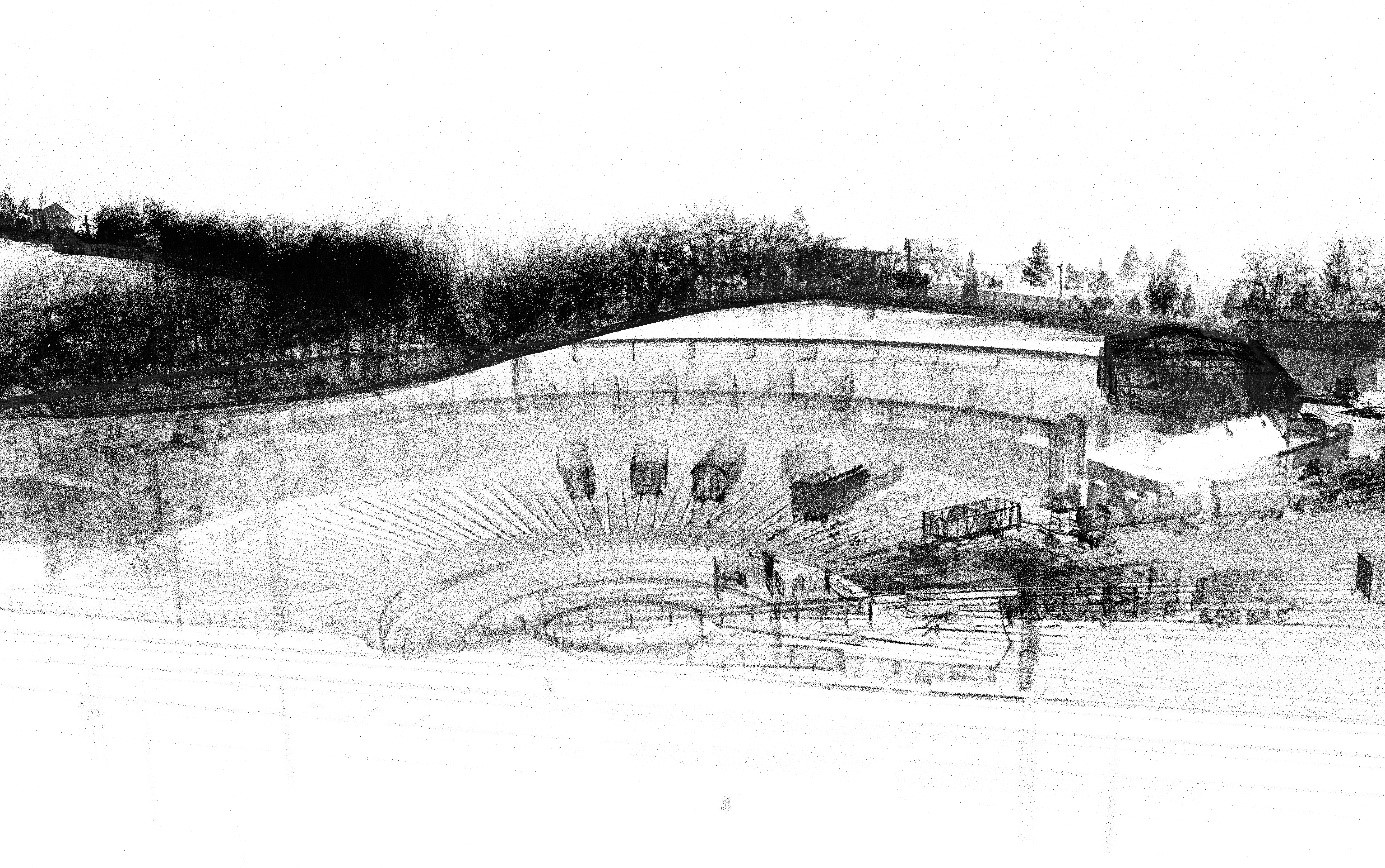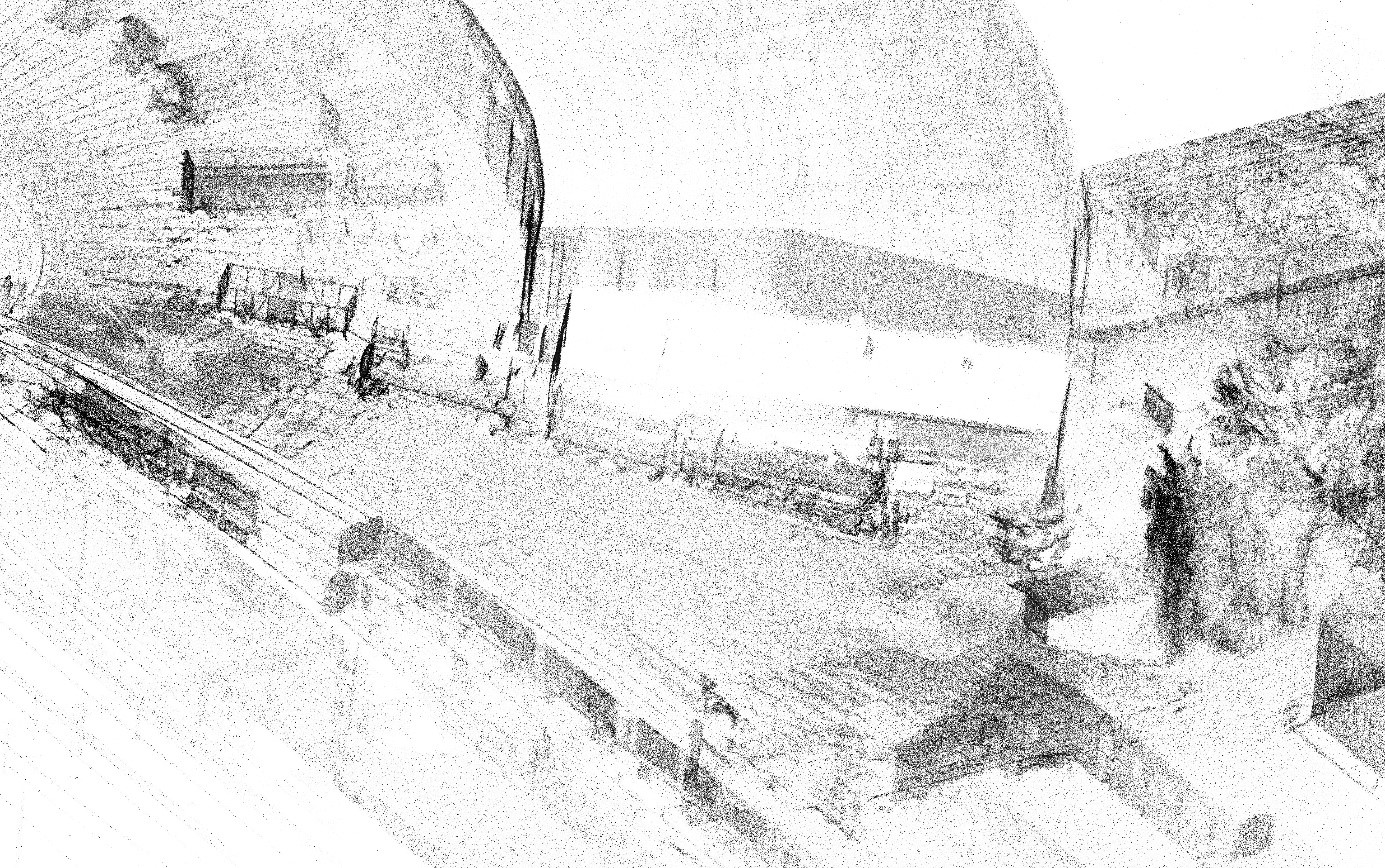Janusz Będkowski (PhD, DSc), Department of Intelligent Technologies IPPT PAN, is conducting innovative research using robotic mobile 3D scanning systems.
The systems can be broadly applied, e.g. in the fields of cultural heritage, environment management, search and rescue, mapping, robotics, navigation, precision forestry, mining, education, entertainment industry, forensics, critical infrastructure inspection, space exploration, security systems, digital twin content generation and automation in the construction industry.
Experiment in the Engine House in Skierniewice
The newest project tested the robotic mobile 3D scanning system in an Engine House in Skierniewice. The experiment aimed to verify whether the system could document a precise 3D digital rendering of the railway turntable and the engine house. The results confirmed that the system successfully generated all the 3D documentation. This might prove crucial in hazardous situations such as fire or chemical contamination when human life is the highest priority.
Robotic Mobile Scanning System
The system consists of a mobile quadrupedal robot, Unitree Go2, of 70x31x40 cm (approx. 27x12x15 in) and weighs less than 15 kg (approx. 33 lb). The robot can move at a maximum speed of 3.5 m/s (approx. 11 ft per second), which is equivalent to the speed of a human runner. Thanks to the remote-controlled operation and excellent field mobility, the robot successfully carried out the Engine House inspection in Skierniewice (Fig. 1).

Pic. 1: Robotic Mobile 3D Laser Scanning System.

Fig. 1 (left) - MANDEYE-PRO 3D scanner designed by the MANDALA company from Skierniewice, equipped with a Livox MID-360 head, GNSS receiver, and a 3600 camera.
Fig. 2 (right) - Livox MID-360 laser and 3D data results rendered in 0.1, 0.2, 0.5, and 1 second.
The key element the robot has been equipped with is the Livox MID-360 head (Fig. 1), with a 70-meter range at 80% reflectivity, a measurement error of 3 cm (1,18 in), and a 200,000 point/s point rate. The head weighs as little as 265 g (9,34 oz) and complies with Class 1 safety (IEC 60825-1:2014).
Research Results
During the experiment, the robot moved around the engine house area, gathering necessary data for creating a 3D map, using open-access software. The result was a precise 3D map rendered in cloud points (as illustrated in Fig. 3, 4, and 5).
The experiment was successful, thus confirming the technology’s effectiveness in creating accurate environment mappings. Such innovative solutions have the potential for widespread use in many scenarios, especially in hazardous situations, enabling fast and safe data collection.

Fig. 3: House Engine 3D map in the Skierniewice town, shown in 3D cloud points – an overhead view.

Fig. 4: House Engine 3D map in the Skierniewice town, shown in 3D cloud points – in perspective.

Fig. 5: House Engine 3D map in the Skierniewice town, shown in 3D cloud points – in perspective.
The Author wishes to thank the Staff of the Engine House in Skierniewice for making the facilities available to conduct the experiment.
Technology and the Future
The technology is expected to see its development in the use of Artificial Intelligence, which will enable the robot to work autonomously. This, in turn, will allow the operators to focus on priorities, such as saving health and life, without the necessity of remotely operating the robot.
Research carried out at the IPPT PAN is yet another step towards the future in which robotic 3D scanning systems will become the standard tool in many fields of life and work, bringing benefits to both daily work, as well as in emergencies.
References:
[1] Janusz Będkowski, Open source, open hardware hand-held mobile mapping system for large scale surveys, SoftwareX, Volume 25, 2024, ISSN 2352-7110
[2] Janusz Będkowski, Large-Scale Simultaneous Localization and Mapping, Springer, ISSN 2520-1956















